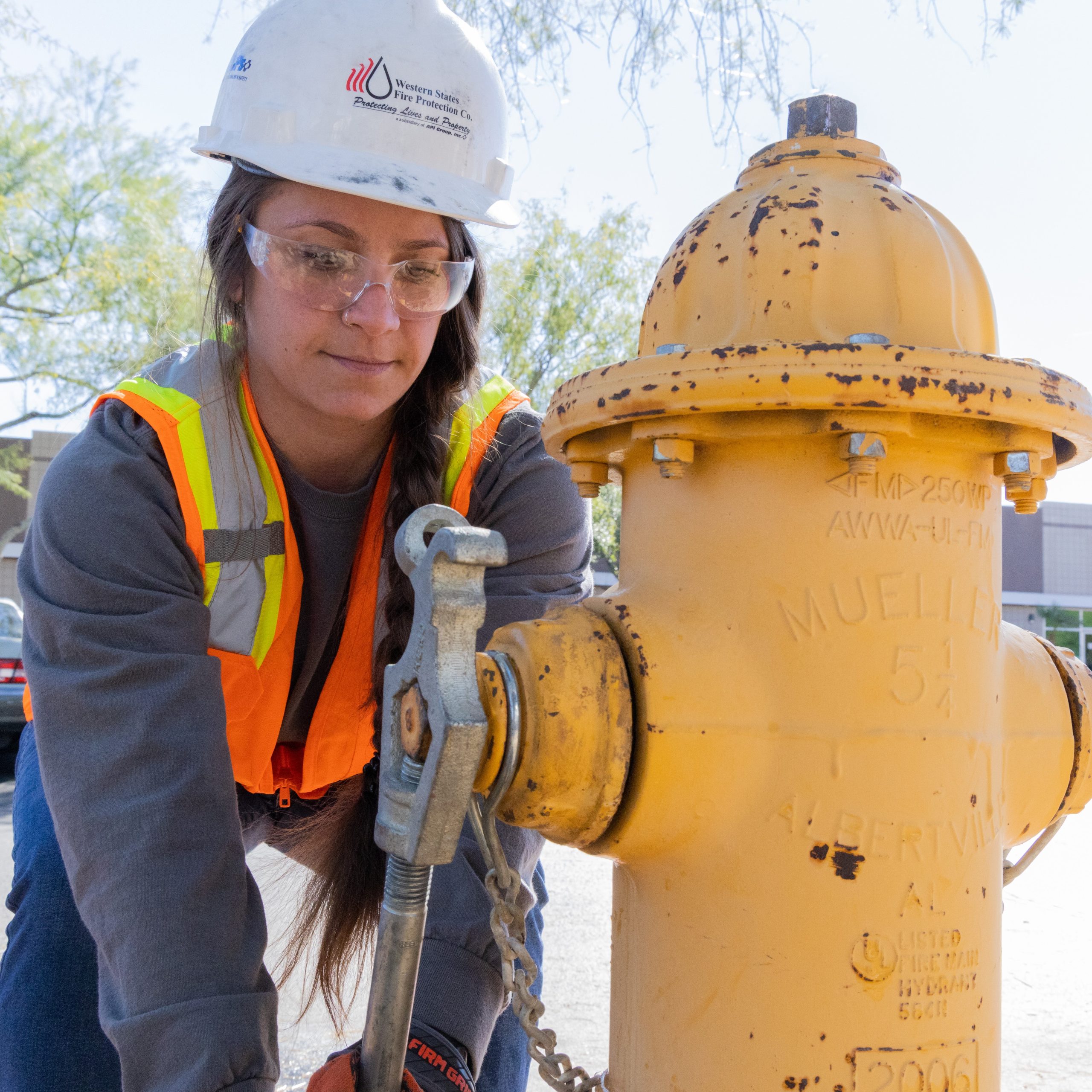Fire Hydrant Inspections & Testing
In the event of a fire, the availability of an adequate water supply is crucial. It can be a matter of life or death for buildings to have the water supply needed to suppress and extinguish a fire. Fire hydrants (sometimes referred to as “fireplugs” or just “plugs”) provide the water for fire department hoses to put out a fire. However, simply having plugs installed in strategic locations is not sufficient to ensure their effectiveness during emergencies. It is important to regularly inspect and test fire hydrants to help keep them operational.
This article delves into the importance of fire hydrant inspection and testing, highlighting their role in safeguarding lives and property from the devastating effects of fires.
Types of Fire Hydrants
Fire hydrants serve as vital infrastructure for firefighting operations. They provide a readily available and accessible water supply that enables firefighters to rapidly connect their hoses, delivering the necessary volume and pressure to combat fires effectively. They are typically connected to municipal water systems, ensuring a continuous flow of water for firefighting efforts, but this is not always the case. There are two main types: wet barrel and dry barrel hydrants.
- Wet Barrel Hydrants – This type of hydrant is connected directly to the pressurized water source and the barrel is always filled with water.
- Dry Barrel Hydrants –These hydrants are typically used in areas that get below-freezing temperatures. A main valve located below the ground separates the hydrant from the pressurized water supply, and the upper barrel section of the hydrant is dry.
Inspection & Testing Requirements for Fire Hydrants
These critical devices must be regularly inspected and tested to ensure their functionality and reliability when they are most needed. Inspection and testing procedures involve comprehensive assessments to determine their overall condition. Trained professionals conduct visual inspections to identify any signs of damage, corrosion, leaks, or other potential issues.
Additionally, flow tests are performed to measure water pressure and flow rates, ensuring they meet the necessary standards. These evaluations provide valuable insights into the hydrants’ maintenance requirements, enabling timely repairs, replacements, or upgrades as needed.
NFPA 291 requires that fire hydrant flow tests be performed every 5 years and fire hydrant inspections be performed annually. Fire hydrant inspections and testing should be performed by a licensed professional.
Annual Hydrant Inspections
Annual fire hydrant inspections check that hydrants are in proper working condition and verify that they are operational when they are needed. Some things that are checked during an annual inspection include:
- Look for obstructions that could interfere with hydrant operation.
- Check for cracked or missing caps.
- Look for leaky or broken nozzles, gaskets, and valves.
- Check for the correct above-ground hydrant height.
- Determine if the hydrant needs to be painted.
- Check for main valve leaks.
- Check water flow using a pressure gauge.
After the fire hydrant inspection is performed, an inspection report must be filed with the proper local authorities. The inspection report should record all issues and repairs along with the static pressure reading, date, and time.
Hydrant Flow Tests
Fire hydrant flow tests are performed to determine the pressure and rate of flow available at various locations. These tests measure the static and residual pressure as well as the rate of discharge. The data from flow tests are used to uncover blockages or infrastructure problems in a water distribution system. Its use also includes properly designing fire sprinkler systems for commercial and residential buildings.
Fire Hydrant Testing
In a fire emergency, every second counts. A malfunctioning or damaged fire hydrant can cause significant delays in accessing an adequate water supply, leading to an escalation of the fire and potentially catastrophic consequences. Regular inspection and testing of a hydrant helps to identify and rectify any issues promptly, reducing the risk of failures during critical moments. By proactively ensuring the operational readiness, potential obstacles that could impede firefighting efforts can be mitigated, safeguarding both lives and property.
Fire hydrant testing and inspection not only address individual hydrant functionality but also contribute to the overall performance of the firefighting water supply system. By identifying and rectifying any shortcomings in the network, such as inadequate water pressure, low flow rates, or malfunctioning valves, the efficiency and effectiveness of the system as a whole can be significantly improved. Regular testing also helps maintain compliance with local fire codes and regulations, ensuring that the water supply meets the necessary standards for firefighting purposes.
Collaboration with Local Departments
Inspection and testing of fire hydrants are typically conducted in collaboration with local fire departments or relevant authorities. Firefighters and other emergency responders rely on accurate and up-to-date information about the location, condition, and performance within their jurisdiction. By maintaining a close working relationship between fire departments and inspection teams, comprehensive data can be collected and utilized to enhance emergency response strategies and optimize firefighting operations. This makes regular fire hydrant testing all the more important.
WSFP Performs Fire Hydrant Inspection & Testing
With our licensing, expertise, and commitment to quality, Western States Fire Protection is prepared to provide fire hydrant inspections and testing at all of our locations. Our technicians are trained to conduct comprehensive annual inspections and precise flow tests, ensuring that your fire hydrants are in optimal condition and capable of providing the necessary water supply for effective fire suppression. By choosing Western States Fire Protection, you can have peace of mind, knowing that your fire hydrants are in the hands of skilled professionals dedicated to protecting your facilities and ensuring the safety of your people. If you are interested in learning more about our fire hydrant inspection and testing services, contact us today!
